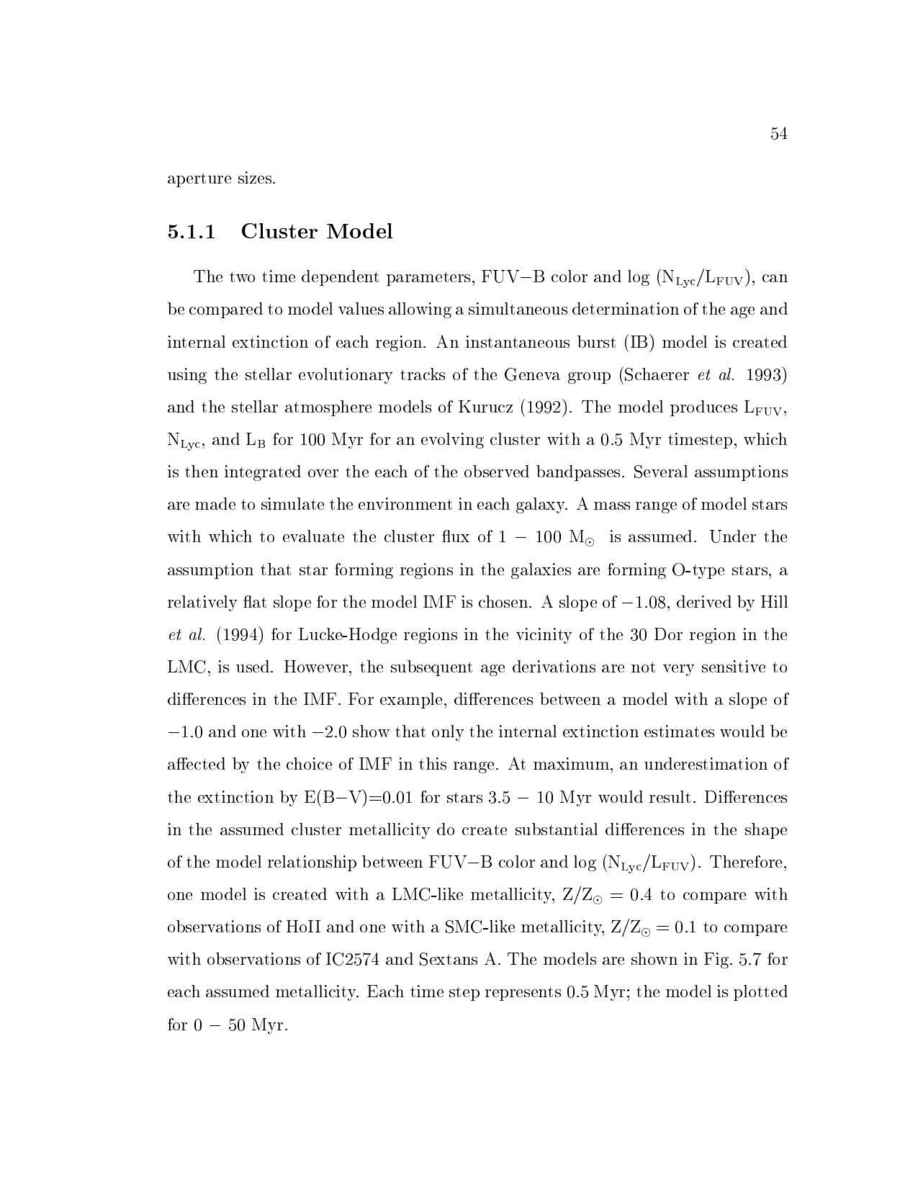
54
aperture sizes.
5.1.1 Cluster Model
The two time dependent parameters, FUV
,
B color and log N
Lyc
L
FUV
, can
be compared to model values allowing a simultaneous determination of the age and
internal extinction of each region. An instantaneous burst IB model is created
using the stellar evolutionary tracks of the Geneva group Schaerer
et
al.
1993
and the stellar atmosphere models of Kurucz 1992. The model produces L
FUV
,
N
Lyc
, and L
B
for 100 Myr for an evolving cluster with a 0.5 Myr timestep, which
is then integrated over the each of the observed bandpasses. Several assumptions
are made to simulate the environment in each galaxy. A mass range of model stars
with which to evaluate the cluster ux of 1
,
100 M is assumed. Under the
assumption that star forming regions in the galaxies are forming O-type stars, a
relatively at slope for the model IMF is chosen. A slope of
,
1.08, derived by Hill
et
al.
1994 for Lucke-Hodge regions in the vicinity of the 30 Dor region in the
LMC, is used. However, the subsequent age derivations are not very sensitive to
di erences in the IMF. For example, di erences between a model with a slope of
,
1.0 and one with
,
2.0 show that only the internal extinction estimates would be
a ected by the choice of IMF in this range. At maximum, an underestimation of
the extinction by EB
,
V=0.01 for stars 3.5
,
10 Myr would result. Di erences
in the assumed cluster metallicity do create substantial di erences in the shape
of the model relationship between FUV
,
B color and log N
Lyc
L
FUV
. Therefore,
one model is created with a LMC-like metallicity, Z Z = 0
:
4 to compare with
observations of HoII and one with a SMC-like metallicity, Z Z = 0
:
1 to compare
with observations of IC2574 and Sextans A. The models are shown in Fig. 5.7 for
each assumed metallicity. Each time step represents 0.5 Myr; the model is plotted
for 0
,
50 Myr.
